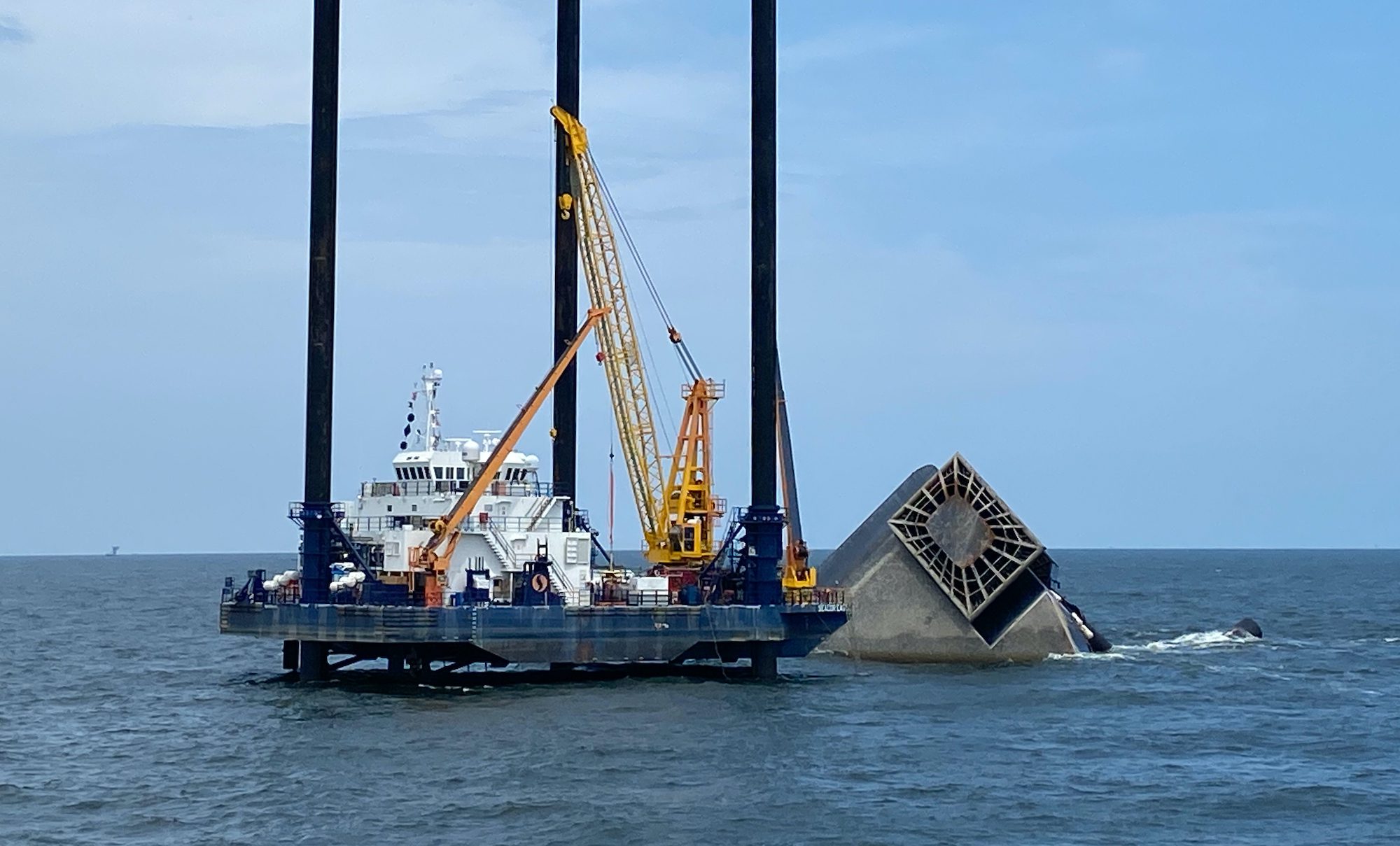Baltimore Bridge Wreck Removal: Progress Report
April 11, 2024: Container Removal Continues The Unified Command is continuing to remove containers from M/V Dali and clear wreckage at the Key Bridge incident site. As of April 11,...


The SEACOR Eagle is staged with gear near the SEACOR Power May 1, 2021 off Port Fourchon, Louisiana. The vessel is being used as platform to assist in salvage and pollution response operations. U.S. Coast Guard photo by Petty Officer 2nd Class Brendan Freeman
The U.S. Coast Guard has announced that crews have completed the removal of diesel fuel from SEACOR Power’s fuel tanks as the operation now shifts to the salvage phase.
Salvage crews removed approximately 20,363 gallons of diesel fuel using the hot tapping method, which involves drilling into the fuel tanks, making a hose connection, and transferring the fuel to portable tanks, the Coast Guard’s 8th District said Wednesday in a news release.
Approximately 4,500 gallons of hydraulic fluid remain on the SEACOR Power. The tanks have not been compromised, but they are currently inaccessible and the hydraulic fluid will be removed after the vessel is raised, the Coast Guard said.
The Coast Guard first announced the successful removal of diesel fuel from the SEACOR Power on Twitter last week. Today’s update provided more details.
“The Coast Guard continues to monitor for any oil discharges and SEACOR Marine has an Oil Spill Response Organization (OSRO) standing by to respond to any situation in which there is recoverable oil,” the Coast Guard said.
Salvage crews will now move to the salvage phase, focusing on removing debris and refloating the vessel.
“The timeline for the raising of the vessel depends on many factors including primarily the safety of salvage crews, the weather, and addressing any new structural changes that may occur. The priority is to salvage the vessel in a safe and efficient manner. The raising of the vessel is not expected to occur before June,” according to the Coast Guard.
There is a Coast Guard safety zone covering a one nautical mile radius around the incident site in effect until June 15. There’s also a Federal Aviation Administration temporary flight restriction covering a five nautical miles radius around the site, and a 2,000-foot minimum altitude around the site in effect until June 15.
The accident remains under investigation by the National Transportation Safety Board and Coast Guard. A preliminary report published Tuesday by the NTSB revealed the SEACOR Power’s crew decided to lower the vessel’s legs to the seafloor to ride out a squall. The vessel capsized as the helmsmen was attempting to turn the Seacor Power into the wind as the legs began to descend.
Among the nineteen people on board the vessel, six were rescued, six were recovered deceased and seven remain missing.
The SEACOR Power was owned and operated by Seacor Marine and chartered to Talos Energy at the time of the accident.
Join the gCaptain Club for curated content, insider opinions, and vibrant community discussions.


Join the 105,840 members that receive our newsletter.
Have a news tip? Let us know.
Access exclusive insights, engage in vibrant discussions, and gain perspectives from our CEO.
Sign Up




Maritime and offshore news trusted by our 105,840 members delivered daily straight to your inbox.



Essential news coupled with the finest maritime content sourced from across the globe.
Sign Up